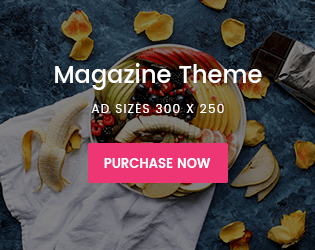What Plinko Can Tell Us About Where to Post
Recording audio and/or video can be a huge investment of time, or very little at all. There’s a super wide range here. It can be a highly produced podcast that also posts the live video recordings, or you could just do TikTok selfie videos on your way back from taking your kids to school every day. There are lots of tools like Descript, Simplecast, and Canva that can help get people spend very little time on something to make it seem very highly produced. My wife and I made a podcast using nothing more than Zoom to record the interviews, Descript to wipe away the “um…” filler words and do some light editing, and Canva to make the cover art. Each episode would take me about 15 minutes to edit and publish after we recorded it because I wasn’t going nuts on the editing side.
Where does it live?
The where does it live question is also an equally complex one, but the way we’ve got our Plinko board setup above, e-mail and LinkedIn clearly play an important role—and I’m a big believer that you’re missing out if you’re not using both.
E-mail is important because it’s really the only channel you have with your audience that you own and control directly. (Perhaps SMS, but most people don’t want your thought leadership in their previous text inbox. That being said, a highly curated group might want to hear from you in something like Whatsapp… I’ve seen that done pretty well for focused groups of highly engaged folks.) Everything else is going through someone else’s visibility algorithm. I liked being able to seamlessly move my audience from Substack to my own blog/website/newsletter just by exporting and importing a bunch of e-mails from one place to another. You can’t do that with TikTok and Instagram, for example.
Does that mean you want to e-mail everything you make to everyone each time? No, certainly not.
However, setting a cadence to update people on what you’re up to in a standardized format could be useful, even if you’re not actually publishing a newsletter.
You could do something like this:
“Hey {{First Name}},
I’d love to know if I could be helpful in any way. This month, I’ve focused on growing my coaching business. The best engagements I’ve had are with fuzzy green monsters who live in garbage cans and want to work on their anger issues.
I continue to post my 60 second guides to thinking more positively on TikTok… [Thumbnail] [Thumbnail] [Thumbnail]
…and I’ll be going to this event. Hope to see you there.
Bob
PS… I got asked to share my thoughts about invisible friendship and so I wrote an essay on it here. I don’t normally write in this format and so I had to put a lot of work into it—so I’d really appreciate any thoughts or feedback you have, and if you liked it, a share with your community.”
I wouldn’t mind getting something like that from someone because it’s quick and punchy, and it reminds me to go check out things I might not have seen if I’m not normally on those platforms.
I also like Julian Shapiro’s approach to monthly newsletters, which is basically the opposite. He makes it very clear that each one is something he put a lot of effort into and so I take notice of it when I see it. The shorter one above is one I don’t need to spend time on, but is a good occasional reminder that someone I found interesting exists and is doing stuff. To each their own.
As for LinkedIn, I think the best case for posting there is that most professionals already have a following there, whether they’ve engaged it or not. That just makes it a no-brainer place to start so that you don’t have to start from zero.
Where else?
Well, back to Plinko. The key thing about Plinko is that each time your chip hits one of those little metal sticks, it changes direction—so wherever you do post, you might want to make some adjustments to the content to fit it appropriately into that particular platform.
For example, TikTok isn’t really a place you want to post long-form interview videos, but you certainly could export clips you made in Descript that highlight interesting points made, and then breadcrumb them to where the longer video lives on Youtube.
At the same time, if you think your audience is on TikTok in real time, you could stream an interview on it live and then just take some clips to repost the highlights to other places like Instagram Reels, LinkedIn, Twitter, your newsletter e-mail or back on TikTok itself.
LinkedIn also has a live feature, although one that’s a little more complex to set up. (You can’t post directly to it, you need to use a third-party service for the actual recording, like Zoom.)
Images can be posted just about everywhere and they’re easy to do. That’s why I placed a huge Plinko circle for them to bounce off right in the middle, because if you’re doing images, you’re just going to be uploading them to lots of places. You’ll just need to decide how much commentary you want to attach. You could post them to Instagram, for example, and decide you want to use links in your bio to try to motivate people to see the extended commentary on another site, like your LinkedIn, Medium, etc.
At the bottom of the Plinko board, I’ve just drawn some crude resting spots for our chips, but also some other places like Twitter and even a curated Whatsapp group of peers and close contacts or colleagues. At some point you need to decide when you want to stop and how many platforms you want to post on, and what they can do for you. Like I said before, Twitter is an easy place for me to post because I’m there already, so I might as well, even if I don’t expect a lot anymore from it.
What you don’t need to do is to post in multiple places that essentially do the same thing, like Substack and Medium. These platforms have tried to build their own reading communities, where people jump from publication to publication looking for new things to read, but that’s not how most people arrive there. The vast majority of the readership that you’ll drive there is either going to be through other places you have an audience, like LinkedIn or Twitter, or via e-mail subscriber bases you grow yourself.
#Protip for building up e-mail subscriber bases, btw:
Events collect e-mails.
If you make your interviews, for example, into live webinars that others put their e-mail address in to RSVP, it’s natural to assume that they want to hear about the other types of content you put out. As long as you give them the chance to opt-out, that’s a totally viable means of driving new subs.
The last thing I’ll say about all of these platforms is to participate in them generously, for two reasons:
One, generous is just a good thing to be as a person, and we should all be striving to be better people, right? :)
But also, if you want to grow your audience, you need to borrow audiences from others—and the best way to do that is by showcasing others. When you link to the work of others and authentically share why you found it useful, you’re more likely to get that person commenting back at you, bringing some of their followers with them through notifications.
When you interview others who have followings, they’ll likely repost it to their own audience, essentially promoting you and them together.
Sometimes, just an offer to collaborate is helpful. Years ago, a fellow VC Hunter Walk made an offer to interview me, but I flipped it and suggested we cross-post interviews with each other to help both our own audiences get to know us better. It was interesting because it gave me the chance to talk about things that I might not otherwise think to post myself. We linked to each other if he did this with a bunch of other blogging people, he would have gotten a bunch of inbound links while linking outbound to others as well.
Here’s his interview with me and mine of him.
If you’re not making specific and intentional moves like this that will result in new people seeing your content, then I wouldn’t expect much help from any of the platforms and their algorithms—most of which are tuned to pick up on newly trending content that gets a lift on its own.
Wherever you decide to post and whatever form it takes, I can honestly say that the total time and effort I’ve put into sharing what I’ve learned has for sure come back to me in connecting me with great people and great opportunities, and definitely sharper thinking on topics I care about.
Here’s to the next 20 years of posting!











COMMENTS